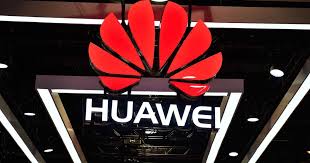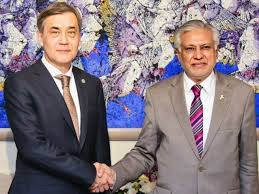Huawei’s seamless AI life strategy

Islamabad: Huawei’s Seamless AI Life Strategy, which aims to provide users with an all-scenario experience across multiple smart devices, can help it differentiate in the home market like China as no other competitors have attempted it, an industry expert said.
“This strategy is very important for any brand as the future is not going to be about hardware but the integration and ecosystem of the software to create a seamless experience. As Huawei is in the network infrastructure space also, they can always tweak the connect devices in a much better way than any of the other brands,” Tarun Pathak, Associate Director at Counterpoint Research, Said.
The Chinese company’s strategy consists of primary (smartphones) and secondary portals of eight smart devices (PCs, tablets, smart TVs, audio devices, smart glasses, smartwatches, cars (telematics) and headphones) and IoT devices (including lighting, security, audio and video, etc.)
It is built on the idea of bringing people closer, making the brand move beyond smartphones to focus more on its “1+8+N” ecosystem.
The “N” stands for the layer where everything comes together and denotes the thousands of IoT-enabled devices that can be seamlessly connected. The “+” sign in between represents Huawei Share and HiLink, the very technology that makes this connection effortless.
Pathak said that China is one-fourth of the total global smartphone market for Huawei.
For Huawei, he said that China has been doing good and its strategy will work fine as it has great products and a good ecosystem strategy apart from the vertical integration of AI and 5G.
“It looks quite robust and they can develop on top of it,” he said.
However, he said that outside of China, the strategy is going to be tough.
“The biggest challenge is anything beyond China. Huawei’s smartphone market share has been declining and users are moving out of the platform. If users are moving out, there is a big chance that the market share will be taken up by competitors such as Apple and Samsung.
“If a person exits the ecosystem, it is difficult to attract them back again. Consumers in some regions, such as the Middle East and Central Eastern Europe, will stick to Huawei brand for a longer period while India and South East Asian consumers will move faster to other ecosystems,” Pathak said.
Moreover, he said that Huawei is gaining market share, outside of China, by selling older devices which has Google Play Store but this strategy cannot continue for a long time as it is not sustainable.
“What Huawei needs to look into right now is for different areas where they can still grow such as Russia. Wherever Huawei can still sell older smartphones in regions such as the Middle East and Africa, that way they can still keep their head above water,” he said.
Huawei is still leading in Russia despite the US ban is one-year-old.
In the first quarter of this year, Huawei had a 33% market share, followed by Samsung with 19% and Xiaomi with 18%.
Pathak said that Huawei can accumulate user base with its smartwatches, smartbands and earbuds. “Earbuds is a new category and is selling well but when it comes to higher-priced devices such as smartphones, TVs and laptops; it will face challenges outside of China. We have seen people use different new categories from different OEMs and people will always try and test the new products,” he said.
Similar to how Samsung has its own Tizen OS to run TVs and smartwatches, he said that Huawei has to invest significantly in Harmony OS and especially from the developer side of things.
“The app system is quite fragmented globally and every region has its own popular apps. So, Huawei needs to attract these developers into Huawei app store. Huawei has deep pockets to develop the developer ecosystem but attracting developers from outside of China is a big challenge,” he said.





